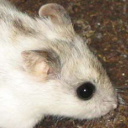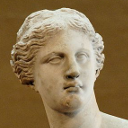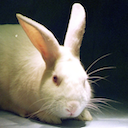| Trade Names | |
| Synonyms | |
| Status | |
| Molecule Category | Free-form |
| ATC | G02CC02 M01AE02 M02AA12 |
| UNII | 57Y76R9ATQ |
| EPA CompTox | DTXSID4040686 |
Structure
| InChI Key | CMWTZPSULFXXJA-VIFPVBQESA-N | |
|---|---|---|
| Smiles | ||
| InChI |
|
Physicochemical Descriptors
| Property Name | Value | |
|---|---|---|
| Molecular Formula | C14H14O3 | |
| Molecular Weight | 230.26 | |
| AlogP | 3.04 | |
| Hydrogen Bond Acceptor | 2.0 | |
| Hydrogen Bond Donor | 1.0 | |
| Number of Rotational Bond | 3.0 | |
| Polar Surface Area | 46.53 | |
| Molecular species | ACID | |
| Aromatic Rings | 2.0 | |
| Heavy Atoms | 17.0 |
Pharmacology
| Targets | EC50(nM) | IC50(nM) | Kd(nM) | Ki(nM) | Inhibition(%) | ||
|---|---|---|---|---|---|---|---|
|
Enzyme
Hydrolase
|
- | - | - | - | 64 | ||
|
Enzyme
Oxidoreductase
|
- | 60-900 | - | - | 30-88 | ||
|
Enzyme
Protease
Aspartic protease
Aspartic protease AD clan
Aspartic protease A22A subfamily
Aspartic protease A22A regulatory subfamily
|
- | - | - | - | 3 | ||
|
Enzyme
|
- | 60-900 | - | - | 30-88 | ||
|
Ion channel
Other ion channel
Miscellaneous ion channel
Presenilin ER Ca2+ leak channel family
|
- | - | - | - | 3 | ||
|
Membrane receptor
Family A G protein-coupled receptor
Peptide receptor (family A GPCR)
Chemokine receptor
CXC chemokine receptor
|
- | - | - | - | 35 | ||
|
Transporter
Electrochemical transporter
SLC superfamily of solute carriers
SLC21/SLCO family of organic anion transporting polypeptides
|
- | - | - | - | 103.46-114.77 |
Target Conservation
|
Protein: Cyclooxygenase Description: Prostaglandin G/H synthase 1 Organism : Homo sapiens P23219 ENSG00000095303 |
||||
|
Protein: Cyclooxygenase Description: Prostaglandin G/H synthase 2 Organism : Homo sapiens P35354 ENSG00000073756 |
||||
Related Entries
Environmental Exposure
Cross References
| Resources | Reference | |
|---|---|---|
| ChEBI | 7476 | |
| ChEMBL | CHEMBL154 | |
| DrugBank | DB00788 | |
| DrugCentral | 1883 | |
| FDA SRS | 57Y76R9ATQ | |
| Human Metabolome Database | HMDB0001923 | |
| Guide to Pharmacology | 5230 | |
| PDB | NPS | |
| PubChem | 156391 | |
| SureChEMBL | SCHEMBL3046 | |
| ZINC | ZINC000000105216 |
 Bos taurus
Bos taurus
 Cavia porcellus
Cavia porcellus
 Cochliobolus lunatus
Cochliobolus lunatus
 Cricetulus griseus
Cricetulus griseus
 Homo sapiens
Homo sapiens
 Mus musculus
Mus musculus
 Oryctolagus cuniculus
Oryctolagus cuniculus
 Ovis aries
Ovis aries
 Rattus norvegicus
Rattus norvegicus
 influenza A virus
influenza A virus



















